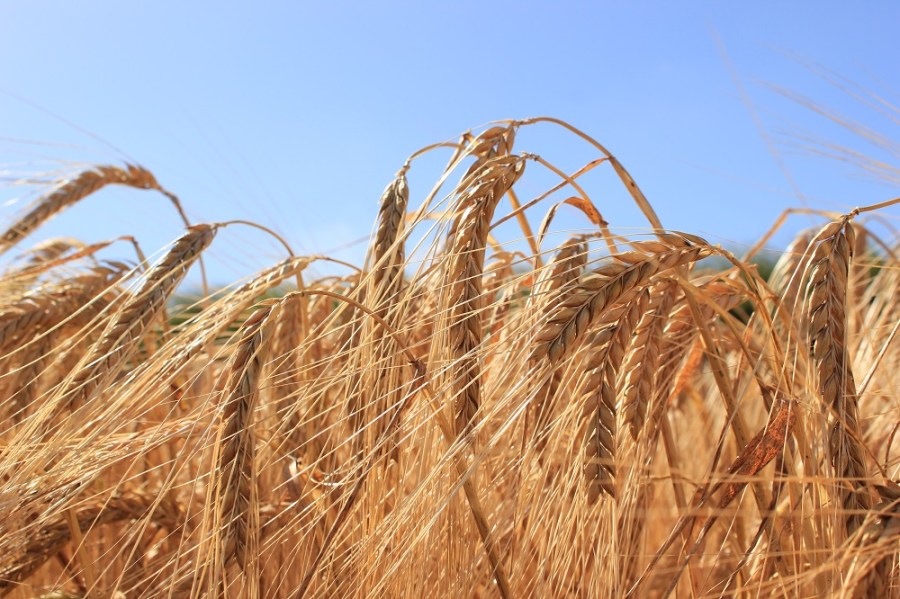With a 10% yield improvement on Concerto and even better quality, LG Opera may get top billing from maltsters. CPM reports.
By Tom Allen-Stevens
A strong domestic demand for malt along with promising new varieties and a steadily expanding UK area are set to keep spring barley prospects buoyant well into the post-Brexit era, according to Limagrain. Its new dual-purpose variety LG Opera has come on to the AHDB Cereals and Oilseeds Recommended List with a 10% yield advantage over market-leading stable mate Concerto and has the promise of even stronger quality.
Concerto alone accounted for more than half of all domestic purchases of malting barley in 2015 (see chart below). But the area grown to the variety is falling away, along with other dual-purpose types, such as Odyssey and Laureate, according to NIAB seed stats. Brewing mainstay Propino is taking up the slack, while relative newcomer RGT Planet is set to take significant market share in 2017 as the area sown overall rises.
“The domestic demand is predominantly for distilling varieties – broadly 60% of UK malt goes for distilling,” points out Limagrain Les Daubney. “But we’re looking at a 700,000ha crop for 2017, which means a large surplus for export or feed. That’s fine, just as long as export demand remains where it is.”
Domestic purchases of spring barley, 2015

Source: MAGB
The distilling market revolves around the single malt distilleries in Scotland. With whisky being the UK’s single largest exported food and drink item, it’s a strong market, notes Limagrain senior barley breeder Mark Glew. But it has particular requirements when it comes to varieties.
“You can’t easily expand a single malt distillery, so to increase production you have to go for maximum alcohol output. That makes marginal gains in hot water extract (HWE) particularly significant. This was the breakthrough with Concerto – it was never the highest yielding variety. Its success was down to its quality.”
Seed market shares by variety

Source: NIAB Seedstats
With malting variety selection driven by HWE, and maltsters excited by fractional gains, LG Opera, currently under test, has particularly bright prospects, he notes. “One thing that can skew HWE results is a variety that loses its husk. But maltsters need the husk – it forms a filter in the distilling process that the wort runs through. Also, it makes up about 5-7% of grain weight, so growers also lose out if a variety skins easily.”
While Concerto is moderate for skinning, Opera appears to be “among the very best”, he says. “It’s also 0.2% higher on HWE – the highest on the RL – and that can make all the difference. At 1.35%, LG Opera’s nitrogen content is the lowest on the RL, and a the lower the grain N, the better the spirit yield will be.”
So how does it perform in the field? One thing to note is its maturity, continues Mark Glew. “It’s earlier than Concerto, and that means a lot as you get further north. What’s more, earlier varieties tend to be the ones with lower RL scores for brackling, but LG Opera has good brackling resistance.”
Limagrain’s Ron Granger has been studying a number of spring barley varieties at the breeder’s agronomy trial sites in Norfolk and Scotland for the past three years. “Spring barley growing is very traditional. But if newer varieties yield 10% higher, should we be looking again at how we grow them?”
On seed rate, his conclusion so far is that 350 seeds/m² is the right place to start. “It works with most varieties, but you’d look to raise it if there was a poor seedbed or you’re drilling later. This would especially be the case with a low tillering variety, such as Concerto.”
As yields increase, specific weight of newer varieties is decreasing, he notes, with Sienna bucking the trend. But tiller counts are going up. “That’s where the yield is coming from,” reckons Ron Granger. Taller, higher tillering varieties should be used in a blackgrass situation, with Ovation, Sienna and Olympus the varieties he’d recommend.
“Most varieties yield well where you have the correct tiller numbers – 775-800/m² should be the aim. But it’s where most growers fall down. So use the seed rate to set the basis, then adapt your nutrition strategy to retain as many as you can.”
With distilling varieties, this is a balancing act, with the aim to keep grain N below the contract spec of 1.65%. But he’s finding in most cases that an extra 30kgN/ha applied at tillering, on top of the standard 120kgN/ha in the seedbed, brings around an extra 0.5t/ha of yield.
“In 2016 trials, grain N stayed well below the 1.65% limit, so the extra N was well worth it. But we had good growing conditions, and if there was a dry spell, this would prompt a late take-up of nitrogen,” he cautions. It’s an area that needs more work, he adds, with scope for further improvement in yields using rates above the restrictive limits set by Fertiliser Manual RB209.
LG Opera is currently under test for IBD approval with results expected in May 2017. If it achieves provisional approval, it will go through to commercial-scale tests, with results due in May 2018, so the earliest commercial fully approved crop wouldn’t be processed until Britain is trading outside the EU.




